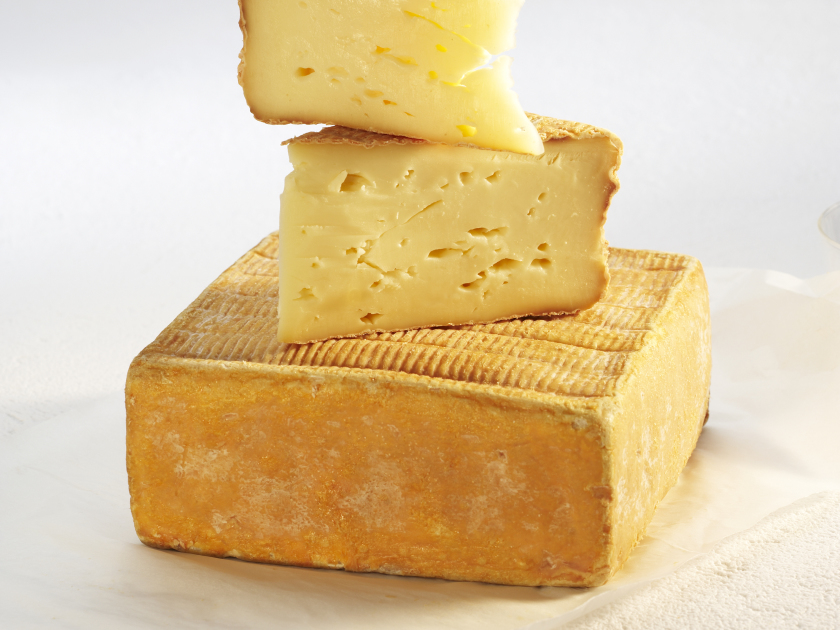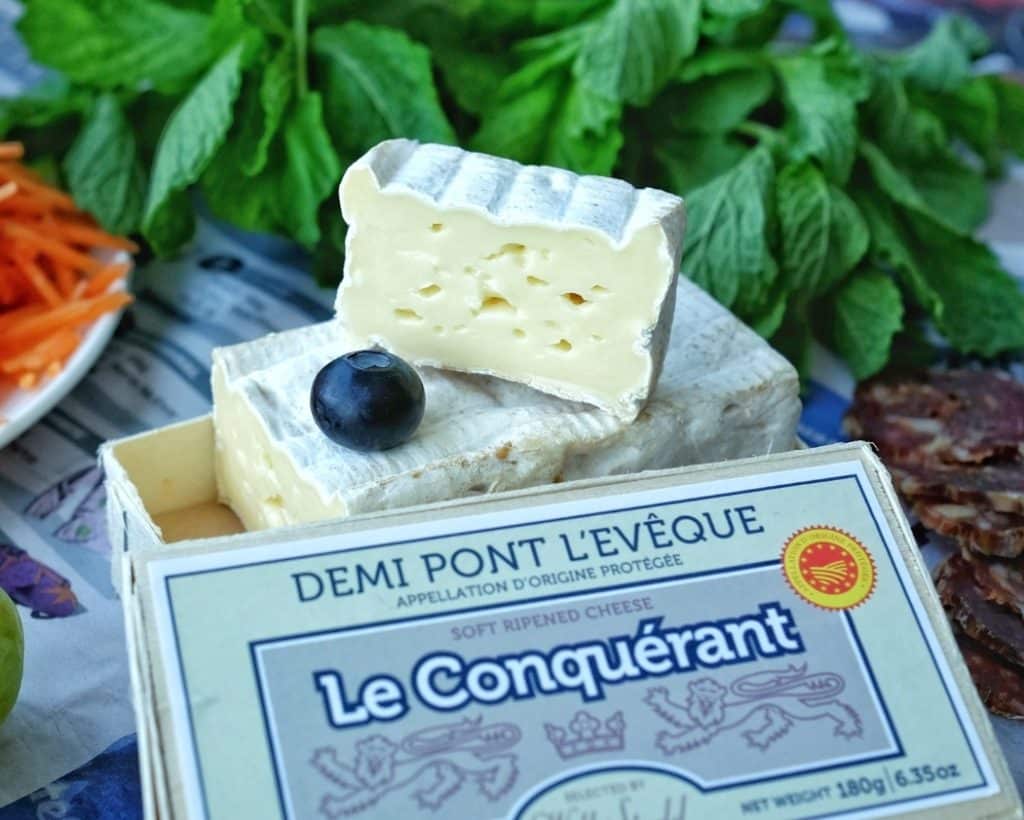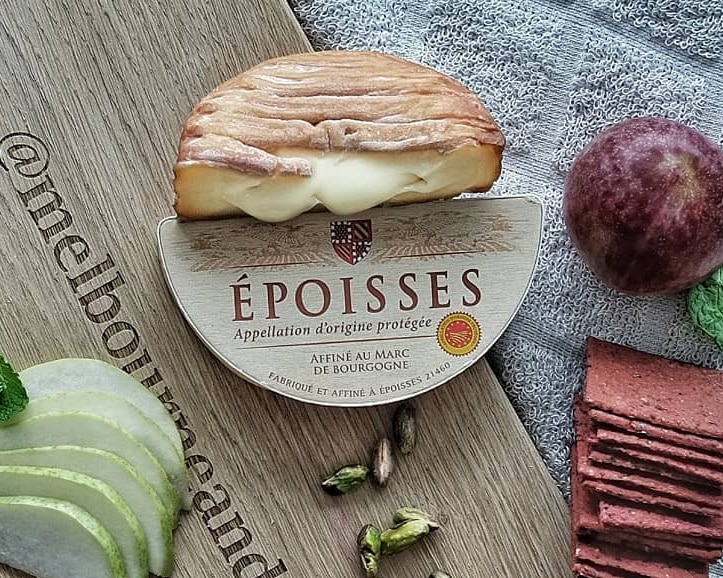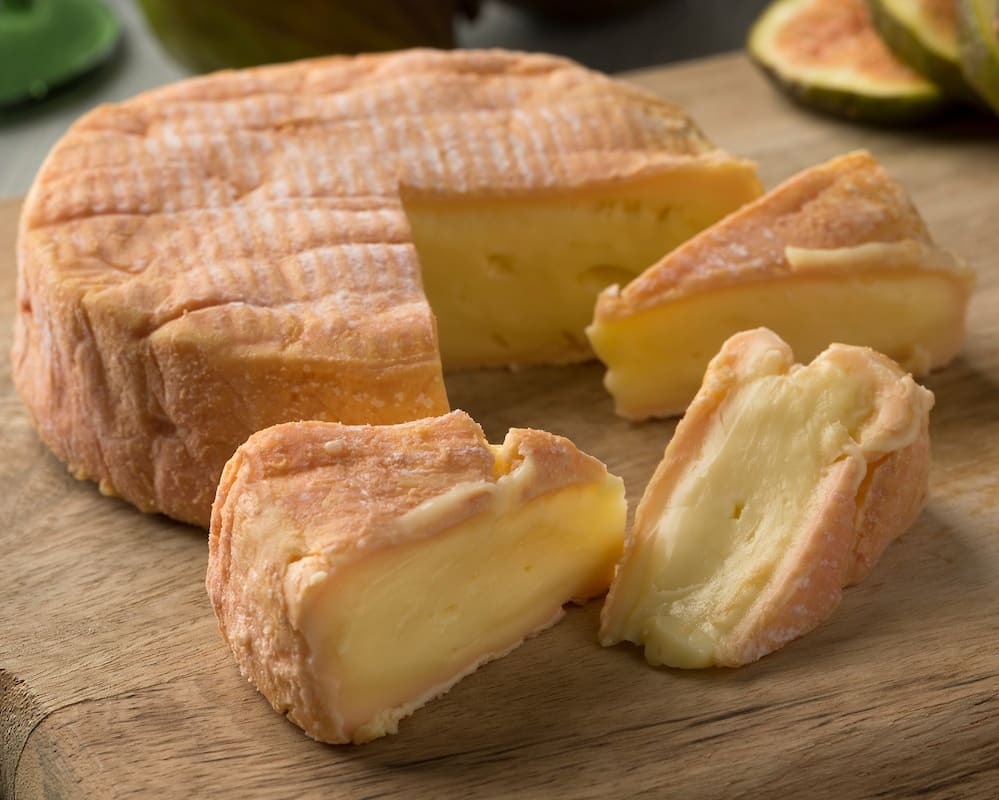Soft washed rind cheeses are indelibly attached to France. And from the country that brought up Epoisses, we also find Maroilles. Read on to learn about this iconic square shaped orange cheese from northern France.

Where does Maroilles come from?
Maroilles is a soft washed rind cheese that is made from cow’s milk. It originates from the Maroilles region of northern France, and is known for its pungent, strong aroma and robust, earthy flavor. The cheese is typically aged for at least two months, and can be found in a variety of shapes and sizes, including squares, rectangles, and rounds.
Unsurprisingly, Maroilles has a long history, with records of its production dating back to the 10th century. Back then, local monks made this washed rind cheese using a recipe that they have since passed down to the next generations. Presently, cheesemakers still make this orange square cheese in the region, using local milk and a recipe that is largely unchanged.
How is Maroilles made?
To make Maroilles, cheesemakers gently heat up their milk and add starter cultures and rennet. Once the curds and whey have been separated, they shape the curds into blocks or rounds, and then leave them to age.
During the aging process, the cheese is washed with a solution of water, salt, and bacteria, which gives it its characteristic pungent aroma and robust flavour. Finally, the aging process also gives the cheese its characteristic orange-red rind and soft, gooey texture.
How to serve Maroilles
Traditionally, the French serve Maroilles as a table cheese. But it can be eaten as is or used as a cooking ingredient. Without a doubt, this robust cheese pairs well with a variety of foods such as crusty bread, fruit, and nuts. It can also be used in a variety of dishes such as gratins, tarts, and quiches.
The cheese has a strong aroma, and it is a pungent cheese, therefore, it should be paired with a robust wine, such as a red wine from the region.
Thank you for reading
Thank you for reading this post about yet another amazing artisanal cheese. Have you tried this cheese before? Drop us a comment below with your thoughts.
If you enjoy learning about new cheeses, you can subscribe to our newsletter below. You will hear from us about once a week as we share new cheese profiles with you.
Finally, keep scrolling to find some more cheeses and recipes that have been recommended for you. Keep it cheesy!



